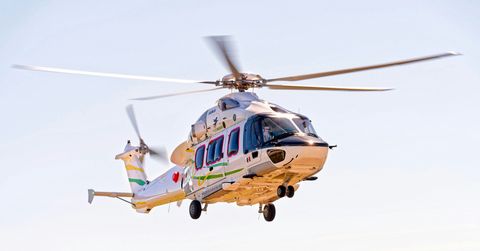An ice breaker in the making
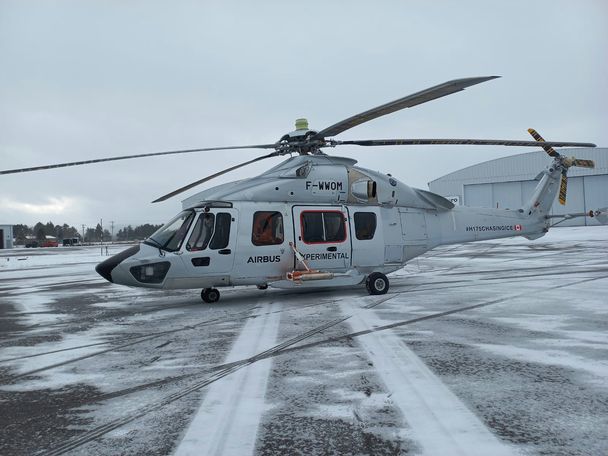
It’s a typical winter's day, with snow capped hills and a fresh flurry of snow descending upon gargantuan tracks as a mythical creature disappears into the mist. While this may look picturesque from above, for helicopter operators, the scenario offers less delightful surprises…particularly once their aircraft enters icing conditions.
Icing is an aviation term used to describe atmospheric conditions where ice formation is observed or detected in flight. When the aircraft enters the clouds for example, ice can accumulate on various parts of the helicopter, which can be detrimental to its performance and the pilot’s ability to safely operate the aircraft. Ice buildup on the windshield reduces visibility, while ice on the blades and airframe can weigh down and destabilise the aircraft.

FIPS (Full Icing Protection System)
In response to the challenges posed by in-flight icing, EASA requires that helicopters be equipped with certified equipment to safely operate in such conditions. An example of a system that is employed by Airbus Helicopters, is FIPS (Full Icing Protection System). The system is currently integrated on the NH90 and H225 and is being tested on the H175.
Developed by Airbus more than a decade ago, FIPS' key features include heated main and tail rotor blades, which essentially melt ice and snow as they hit the blades. It also includes a winter kit (already certified for limited icing conditions) for engine air intake, a horizontal stabiliser protection plate, an ice detector and a heated windscreen to help maintain visibility and navigate the helicopter safely in IMC (instrument meteorological conditions).
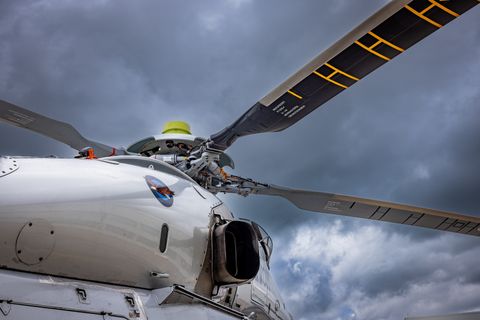
In addition to this, an electrical power distribution system, which is used to heat the main and the rear blades, is currently being enhanced for the H175 as it recently finalised its latest season of icing testing. Marc Prunel, Experimental Test Pilot who recently embarked on the super-medium helicopter’s de-icing journey, explains the ease in using the system. “The pilot starts the system once the first visual detectors pick up icing. Once activated, the system works automatically, making the workload for the pilot negligible.”
Mainly located in the cargo bay, the system can also be removed in warmer weather to increase capacity for luggage transport. This can be particularly useful for operators who need to switch between cold and warm weather configurations. And when installed for icing conditions, the system’s compact size enables the continued use of the cargo bay - a plus for search and rescue operations for example.
Winter equipment
At the moment, the H175 can operate in temperatures as low as -40°farenheit (-40° celcius) while flying up to 15,000 feet (4,572 metres) without icing conditions, and is certified to fly in limited icing conditions (FLIC) when equipped with a heated windshield, ice detector, and protection for the air intake and the stabiliser. It can fly down to -6° celcius in limited icing conditions with no time limitation, and down to -10° celcius for up to 5 minutes. In both instances, the aircraft can fly up to 8,000 ft, with a positive air temperature band of 500 feet available for the aircraft’s descent.
While flying in limited icing conditions suits operators managing cold weather operations at lower altitudes, the expansion of the H175's flight envelope will be a crucial development for pilots whose operations are often hindered by more extreme conditions. Certification of FIPS on the H175 will enable pilots to fly up to 10,000 ft in icing conditions down to -40° celsius, with no time limitation - this will be a real game changer for operators in cold climates, such as Canada and Norway, tasked with more lengthy operations, like climate research, search and rescue, offshore transport and HEMS.
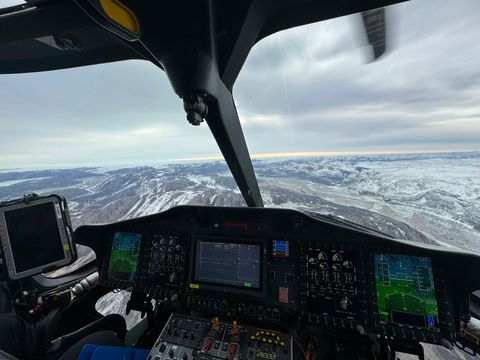
Gearing up for certification
In order to meet the certification requirements, the aircraft must undergo a series of tests to demonstrate that it can withstand a wide range of atmospheric conditions. The first phase of testing involves placing the aircraft in a climate-controlled chamber to test the blades and heating cycles. “Once this stage is complete,” adds Marc Prunel, “the aircraft is tested in flight in dry conditions to ensure that the blades and heating cycles do not heat up. After this step, we go into the clouds and gradually work our way up.”
The first testing campaign, which took place in winter of 2021-2022, was performed in France (South Massif Central, Alps, and Brittany), and in Norway (Bronnoysund), with another campaign in Norway in 2023. While the flight test results provided useful insight, the H175 recently took off on another round of de-icing tests in order to test more extreme and varied meteorological conditions. The campaign, otherwise known as #H175chasingice, kicked off in southern Ontario, Canada in late 2023, with testing that continued in parallel in Norway on a second aircraft in 2024.
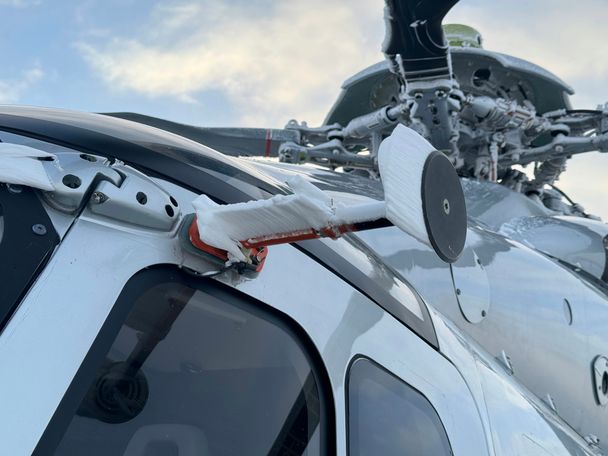
While both Canada and Norway offer icing conditions, Prunel notes the atmosphere conditions are not the same. “In Canada, icing is created by water. The polar wind coming in off the big lakes picks up the moisture and supercools the drops in the clouds. In Norway, the winds are the same, but they come in over the sea, so it’s not the same type of humidity.” He adds that these varied conditions enable different testing scenarios. “In Canada, we had what’s called continuous maximum icing, which means we have to stay in the clouds for half an hour. While the conditions are there, we have to stay a long time with the water densities that are required by the certification regulations. Then there’s IMI, intermittent maximum icing, where we’re asked to go into much heavier water conditions with much more severe icing, but for much shorter periods of time, hence the intermittent conditions. From experience, we’re more likely to encounter intermittent conditions in Norway and continuous conditions in Canada.”
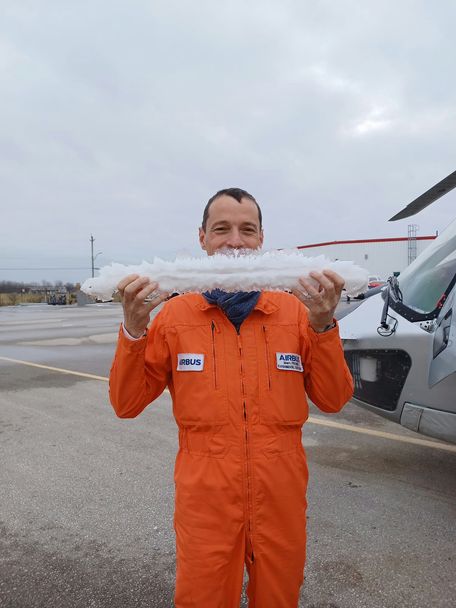
With more than 2.5 metres of ice accumulated over 200 flight hours, the H175 and the flight test team have had a rich and rewarding experience. Stay tuned to discover more about their journey!



